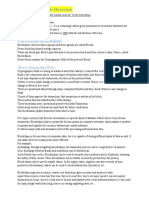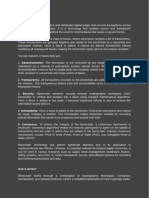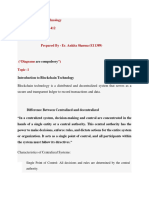0% found this document useful (0 votes)
26 views2 pagesUnderstanding Blockchain
Blockchain is a secure and transparent digital ledger used to store information, primarily for cryptocurrencies like Bitcoin and Ethereum. It consists of linked blocks containing transaction data, timestamps, and unique hashes, ensuring immutability and security through decentralization. Blockchain technology has applications in various fields, including smart contracts, supply chain tracking, and voting systems.
Uploaded by
anandhunandhu2627Copyright
© © All Rights Reserved
We take content rights seriously. If you suspect this is your content, claim it here.
Available Formats
Download as PDF, TXT or read online on Scribd
0% found this document useful (0 votes)
26 views2 pagesUnderstanding Blockchain
Blockchain is a secure and transparent digital ledger used to store information, primarily for cryptocurrencies like Bitcoin and Ethereum. It consists of linked blocks containing transaction data, timestamps, and unique hashes, ensuring immutability and security through decentralization. Blockchain technology has applications in various fields, including smart contracts, supply chain tracking, and voting systems.
Uploaded by
anandhunandhu2627Copyright
© © All Rights Reserved
We take content rights seriously. If you suspect this is your content, claim it here.
Available Formats
Download as PDF, TXT or read online on Scribd
/ 2
























































